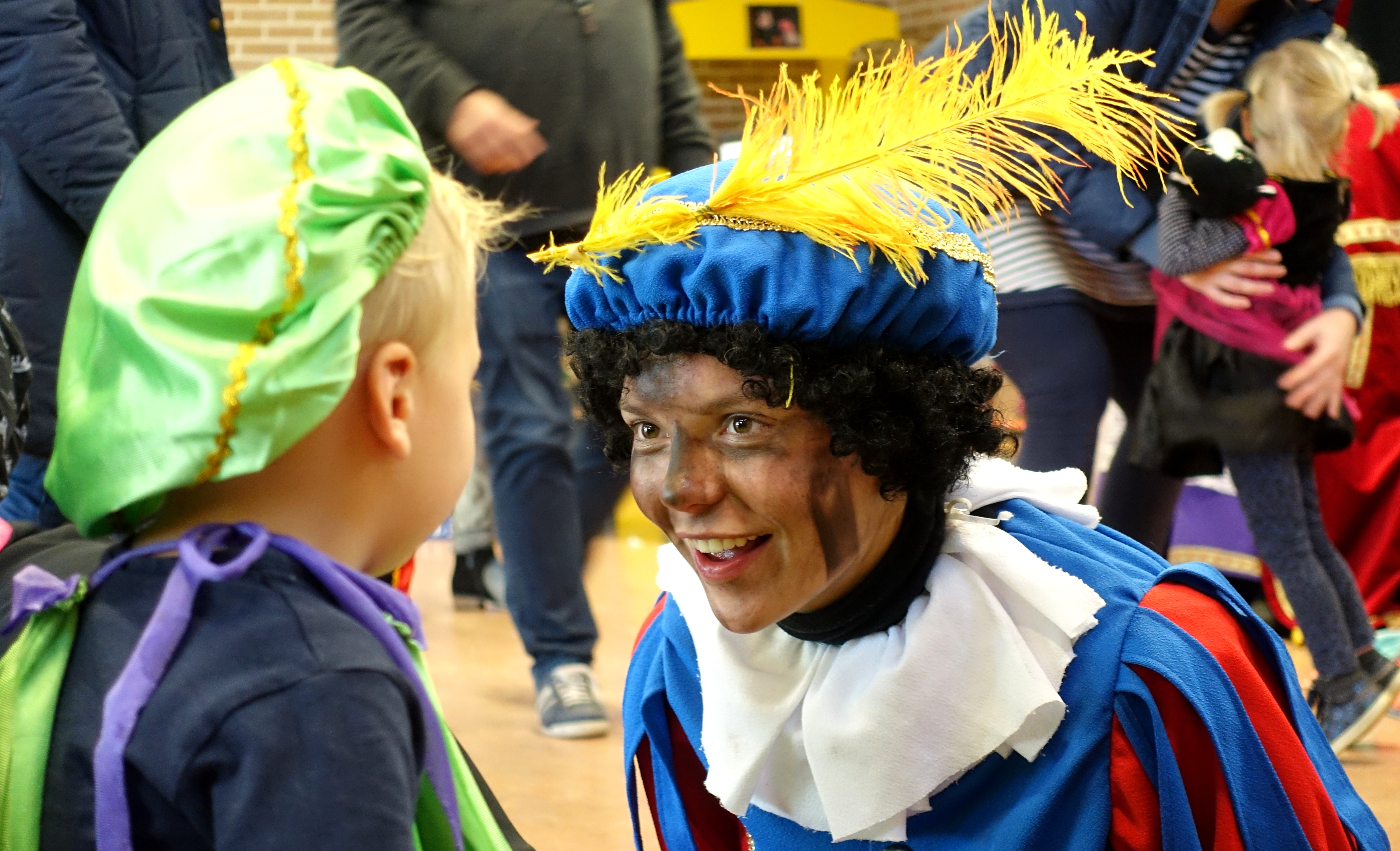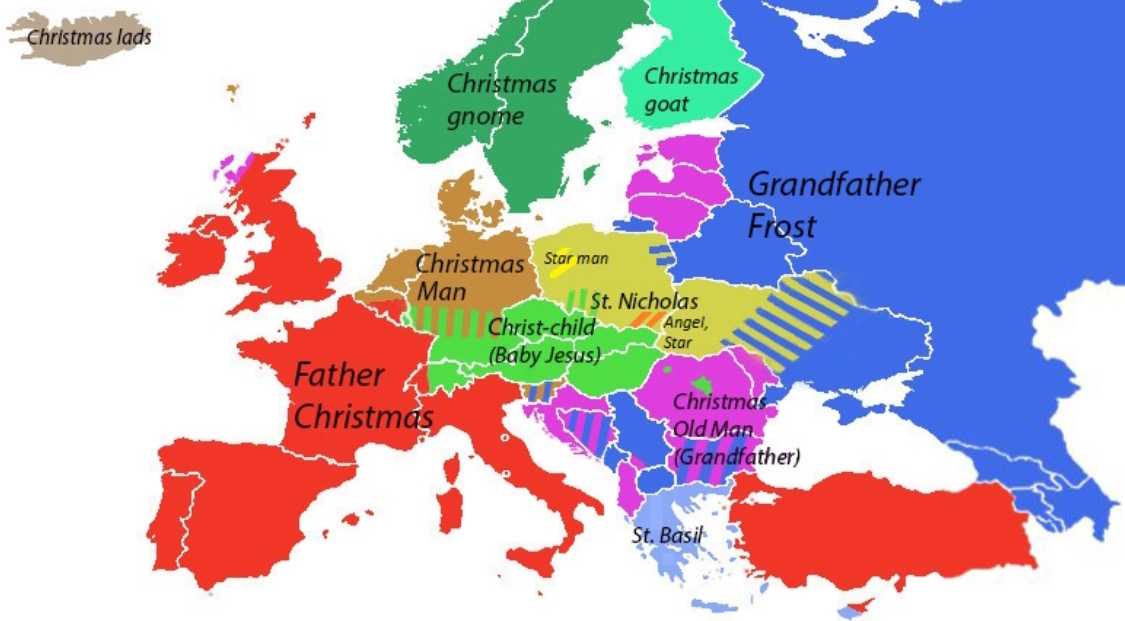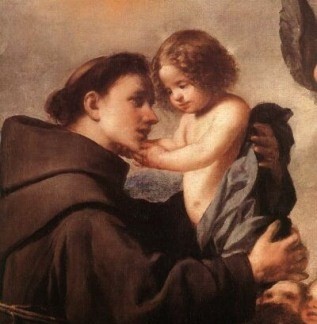|
Christkind
The Christkind (; ), also called Christkindl, is the traditional Christmas gift-bringer in Austria, Switzerland, Slovenia, southern and western Germany, the Czech Republic, Croatia, Liechtenstein, Luxembourg, the eastern part of Belgium, Portugal, Slovakia, Hungary, parts of northeastern France, Upper Silesia in Poland, parts of Latin America, in certain areas of southern Brazil, and in the Acadiana region of Louisiana. Christkind is called in Portuguese ("Boy Jesus"), in Hungarian ("Little Jesus"), in Slovak ("Little Jesus"), in Czech ("Little Jesus"), in Latin America ("Child God") or ("Child Jesus") and in Croatian ("Little Jesus"), in Silesian ''Dziyciōntko Jezus'' (Baby Jesus), in Cieszyn Silesian ''Aniołek'' ("Little Angel"), in Polish ("Little baby"). In some parts of Italy, the analogous figure of the Christkind is known as ("Child Jesus"). History Promulgated by Martin Luther at the Protestant Reformation in 16th–17th-century Europe to discourage ... [...More Info...] [...Related Items...] OR: [Wikipedia] [Google] [Baidu] |
Christkindlesmarkt Prolog 2009
A Christmas market is a street market associated with the celebration of Christmas during the four weeks of Advent. These markets originated in Germany, but are now held in many countries. Some in the U.S. have adapted the German name to quasi-English ''Christkindlmarket'', swapping German ''Markt'' and ''market''. Christmas markets date to the Late Middle Ages in the German-speaking part of Europe and in many parts of the former Holy Roman Empire, which included many eastern regions of modern France. They became a popular Advent custom during the Reformation era. Dresden's Striezelmarkt was first held in 1434 and one of the first true Christmas markets; earlier markets of the season were "December markets". Early mentions of these "December markets" can be found in Vienna (1296), Munich (1310), Bautzen (1384), and Frankfurt (1393). In many towns in Germany, Switzerland, and Austria, Advent is usually ushered in with the opening of the Christmas market or ''Weihnachtsmarkt''. ... [...More Info...] [...Related Items...] OR: [Wikipedia] [Google] [Baidu] |
Christkindlesmarkt, Nuremberg
The Christkindlesmarkt of Nuremberg (German language, German: ''Nürnberger Christkindlmarkt''; Bavarian language, Bavarian: ''Niamberga Christkindlmarkt'') is a Christmas market that is held annually in Nuremberg, Germany. It takes place during Advent in the Hauptmarkt, the central square in Nuremberg’s old town, and in adjoining squares and streets. With about two million visitors a year the Nürnberger Christkindlesmarkt is one of the largest Christmas markets in Germany and one of the most famous in the world. Every year the Christmas market begins on the Friday preceding the first Sunday in Advent and ends on Christmas Eve unless that day is a Sunday. History Despite intense investigations carried out by several historians and people interested in local history, the origins of the Nürnberger Christkindlesmarkt are unknown. The oldest piece of evidence relating to it is a box made of coniferous wood in the possession of the Germanic National Museum in Nuremberg. On the b ... [...More Info...] [...Related Items...] OR: [Wikipedia] [Google] [Baidu] |
Nuremberg
Nuremberg (, ; ; in the local East Franconian dialect: ''Nämberch'' ) is the Franconia#Towns and cities, largest city in Franconia, the List of cities in Bavaria by population, second-largest city in the States of Germany, German state of Bavaria, and its 544,414 (2023) inhabitants make it the List of cities in Germany by population, 14th-largest city in Germany. Nuremberg sits on the Pegnitz (river), Pegnitz, which carries the name Regnitz from its confluence with the Rednitz in Fürth onwards (), and on the Rhine–Main–Danube Canal, that connects the North Sea to the Black Sea. Lying in the Bavarian Regierungsbezirk, administrative region of Middle Franconia, it is the largest city and unofficial capital of the entire cultural region of Franconia. The city is surrounded on three sides by the , a large forest, and in the north lies (''garlic land''), an extensive vegetable growing area and cultural landscape. The city forms a continuous conurbation with the neighbouring ... [...More Info...] [...Related Items...] OR: [Wikipedia] [Google] [Baidu] |
Santa Claus
Santa Claus (also known as Saint Nicholas, Saint Nick, Father Christmas, Kris Kringle or Santa) is a legendary figure originating in Western Christian culture who is said to bring gifts during the late evening and overnight hours on Christmas Eve. Christmas elves are said to make the gifts in Santa's workshop, while flying reindeer pull his sleigh through the air. The popular conception of Santa Claus originates from folklore traditions surrounding the 4th-century Christian bishop Saint Nicholas, the patron saint of children. Saint Nicholas became renowned for his reported generosity and secret gift-giving. The image of Santa Claus shares similarities with the English figure of Father Christmas, and they are both now popularly regarded as the same person. Santa is generally depicted as a portly, jolly, white- bearded man, often with spectacles, wearing a red coat with white fur collar and cuffs, white-fur-cuffed red trousers, a red hat trimmed with white fur, a b ... [...More Info...] [...Related Items...] OR: [Wikipedia] [Google] [Baidu] |
Sinterklaas
Sinterklaas () or Sint-Nicolaas () is a legendary figure based on Saint Nicholas, patron saint of children. Other Dutch names for the figure include ''De Sint'' ("The Saint"), ''De Goede Sint'' ("The Good Saint") and ''De Goedheiligman'' (derived from ''goed hylickman'' meaning "good marriage man", alluding to his historical reputation as a Saint who can help you find a good life partner). Many descendants and cognates of "Sinterklaas" or "Saint Nicholas" in other languages are also used in the Low Countries, nearby regions, and former Dutch colonies. The feast of Sinterklaas celebrates the Saint Nicholas Day, name day of Saint Nicholas on 6 December. The Sinterklaas feast is celebrated annually with the giving of gifts on St. Nicholas' Eve (5 December) in the Netherlands and on the morning of Saint Nicholas Day (6 December) in Belgium, Luxembourg, western Germany, and northern France (French Flanders, Lorraine, Alsace and Artois). The tradition is also celebrated in some territ ... [...More Info...] [...Related Items...] OR: [Wikipedia] [Google] [Baidu] |
Father Christmas
Father Christmas is the traditional English name for the personification of Christmas. Although now known as a Christmas gift-bringer, and typically considered to be synonymous with Santa Claus, he was originally part of a much older and unrelated English folkloric tradition. The recognisably modern figure of the English Father Christmas developed in the late Victorian period, but Christmas had been personified for centuries before then. English personifications of Christmas were first recorded in the 15th century, with Father Christmas himself first appearing in the mid 17th century in the aftermath of the English Civil War. The Puritan-controlled English government had legislated to abolish Christmas, considering it popish, and had outlawed its traditional customs. Royalist political pamphleteers, linking the old traditions with their cause, adopted Old Father Christmas as the symbol of 'the good old days' of feasting and good cheer. Following the Restoration in 1660, Fathe ... [...More Info...] [...Related Items...] OR: [Wikipedia] [Google] [Baidu] |
Ded Moroz
Ded Moroz, or Morozko (), is a legendary figure similar to Father Christmas, and Santa Claus who has his roots in Slavic mythology. The tradition of Ded Moroz is mostly spread in East Slavs, East Slavic countries and is a significant part of Russian culture. At the beginning of the Soviet Union, Soviet era, Communist Party of the Soviet Union, communist authorities banned Ded Moroz. However, the ban was lifted and he soon became a significant part of Culture of the Soviet Union, Soviet culture. The literal translation of wikt:дед, Ded wikt:мороз, Moroz is ''Grandfather Frost'' or ''Old Man Frost'', but traditionally the name is translated as Father Frost. Ded Moroz wears a heel-length Fur clothing, fur coat, in red or blue, a semi-round fur hat, and ''valenki'' on his feet. He has a long white beard. He walks with a long Walking stick, magic stick and often rides a Troika (driving), troika. He is often depicted bringing presents to well-mannered children, often delivering ... [...More Info...] [...Related Items...] OR: [Wikipedia] [Google] [Baidu] |
Christmas Gift-bringer
A number of Midwinter or Christmas traditions in European folklore involve gift-bringers. Mostly involving the figure of a bearded old man, the traditions have mutually influenced one another, and have adopted aspects from Christian hagiography, even before the modern period. In Eastern Slavic countries, the figure is Father Frost. In Scandinavia, it is an elf-like figure or tomten who comes at Yule (and who sometimes also takes the form of a goat). In German-speaking Europe and Latin Europe, it became associated with the Christian Saint Nicholas. In some parts of Central Europe, there is a separate tradition of a young child or fairy-like being bringing presents, known as Christkind. Early modern England had Father Christmas, a character initially associated with feasting and good cheer, though he was not originally a gift bringer. From these European traditions, the North American figure of Santa Claus developed, beginning in the 1820s. The American figure in turn had consi ... [...More Info...] [...Related Items...] OR: [Wikipedia] [Google] [Baidu] |
Christ Child
The Christ Child—also known as Baby Jesus, Infant Jesus, Child Jesus, Divine Child, Divine Infant and the Holy Child—refers to Jesus in Christianity, Jesus Christ during his early years. The term refers to a period of life of Jesus, Jesus' life, described in the canonical Gospels, encompassing his nativity of Jesus, nativity in Bethlehem, the visit of the Magi, and his Presentation of Jesus, presentation at the Temple in Jerusalem. It also includes his childhood, culminating in the event where his parents Finding in the Temple, find him in the Temple at age 12, after which the Gospels Unknown years of Jesus, remain silent about his life until the start of his ministry of Jesus, ministry. Liturgical feasts Liturgical feasts relating to Christ's infancy and childhood include: * Christmas, The Feast of the Nativity of Jesus Christ (25 December) * The Feast of the Circumcision of Christ#Byzantine Catholic and Eastern Orthodox Churches, Feast of the Circumcision of Christ (1 Janu ... [...More Info...] [...Related Items...] OR: [Wikipedia] [Google] [Baidu] |
Southern Germany
Southern Germany (, ) is a region of Germany that includes the areas in which Upper German dialects are spoken, which includes the stem duchies of Bavaria and Swabia in present-day Bavaria, Baden-Württemberg, and the southern portion of Hesse and Rhineland-Palatinate that were part of the Duchy of Franconia. German-speaking Switzerland, Austria, Liechtenstein, Alsace, and South Tyrol are also historically, culturally, and linguistically associated with the region. Boundaries Southern Germany primarily contrasts with Northern Germany and defines the territories of modern Germany that did not form part of the North German Confederation in the 19th century. Between Northern and Southern Germany is the loosely defined area known as Central Germany (''Mitteldeutschland''), roughly corresponding to the areal of Central German dialects ( Franconia, Thuringia, Saxony). The boundary between the spheres of political influence of Prussia (Northern Germany) and Austria (Southern Ger ... [...More Info...] [...Related Items...] OR: [Wikipedia] [Google] [Baidu] |
Upper Silesia
Upper Silesia ( ; ; ; ; Silesian German: ; ) is the southeastern part of the historical and geographical region of Silesia, located today mostly in Poland, with small parts in the Czech Republic. The area is predominantly known for its heavy industry (mining and metallurgy). Geography Upper Silesia is situated on the upper Oder River, north of the Eastern Sudetes mountain range and the Moravian Gate, which form the southern border with the historic Moravia region. Within the adjacent Silesian Beskids to the east, the Vistula River rises and turns eastwards, the Biała and Przemsza tributaries mark the eastern border with Lesser Poland. In the north, Upper Silesia borders on Greater Poland, and in the west on the Lower Silesian lands (the adjacent region around Wrocław also referred to as Middle Silesia). It is currently split into a larger Polish and the smaller Czech Silesian part, which is located within the Czech regions of Moravia-Silesia and Olomouc. The P ... [...More Info...] [...Related Items...] OR: [Wikipedia] [Google] [Baidu] |







